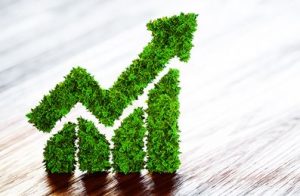26 Feb 2015 Green Bonds Are Changing Investor Expectations & Making Sustainable Investing Easier
- Green bonds are mobilizing billions of dollars a year for development projects that countries and cities need, carried out in ways that are good for the climate and environment.
- 2014 was a record year for the young green bond market, with over $35 billion in new issuances, more than triple the year before.
- Several trends are emerging for 2015, including new types of issuers, green bond indices, and changing investor expectations.
A year ago in Davos, World Bank Group President Jim Kim encouraged investors at the World Economic Forum to take a closer look at green bonds, a relatively new but growing option for investing in a sustainable and responsible way: Green bonds act like other bonds, but they can help fill  gaps in much-needed development finance for climate-friendly projects.
gaps in much-needed development finance for climate-friendly projects.
About $11 billion in green bonds had been issued the previous year. The president called for doubling the annual issuances by the September 2014 Climate Leadership Summit. With new types of issuers, new green bond indices being created, and more buyers investing, the year closed with more than $35 billion in new green bonds.
As the World Economic Forum returns to Davos this week, green bond investments are widely forecast to continue their strong growth in 2015.
At the World Bank Group, we see several trends emerging.
Investor expectations are changing
The growth of the green bonds market is helping change how money is invested and what investors expect their money to accomplish.
Since the start of the market in 2007, the majority of green bonds have been issued by development banks like the World Bank and IFC and used for climate- and environment-friendly projects such as expanding rural solar power in Peru and large-scale renewable energy in Mexico; increasing irrigation efficiency in Tunisia; and expanding clean urban transport in Colombia, among other work.
Investors are drawn to both the liquid, fixed-income investments that green bonds offer and the positive impact they can have.
Many institutional investors such as pension funds now have mandates for sustainable and responsible investments and are developing strategies that
explicitly address climate risks and opportunities in different asset classes. Green bonds can provide the verification and impact measurement that investors need. In the case of World Bank green bonds and IFC green bonds, they also bring AAA/Aaa ratings.
“Environmental degradation, poverty and the effects of climate change all threaten the well-being and stability of countries, communities, resources and businesses. Investors increasingly recognize the threats these forces create for long-term financial value and are increasingly considering it in  their investment choices,” said Laura Tlaiye, a sustainability advisor at the World Bank, one of the first and largest issuers of green bonds with more than US$7 billion issued in 18 currencies.
their investment choices,” said Laura Tlaiye, a sustainability advisor at the World Bank, one of the first and largest issuers of green bonds with more than US$7 billion issued in 18 currencies.
Green bonds also give smaller investors a way to vote with their money. The State of Massachusetts, for example, received more than 1,000 orders from investors for a green bond it issued last year – most of them individual investors interested in supporting their local government’s investment in the environment.
“The fact that there are investors looking for these types of investments and asking for detailed metrics on environmental performance changes incentives. We reach investors we would not otherwise reach, diversify and expand the investor base and funding sources,” said Heike Reichelt, head of investor relations and new products at the World Bank.
For further information, please refer to:
